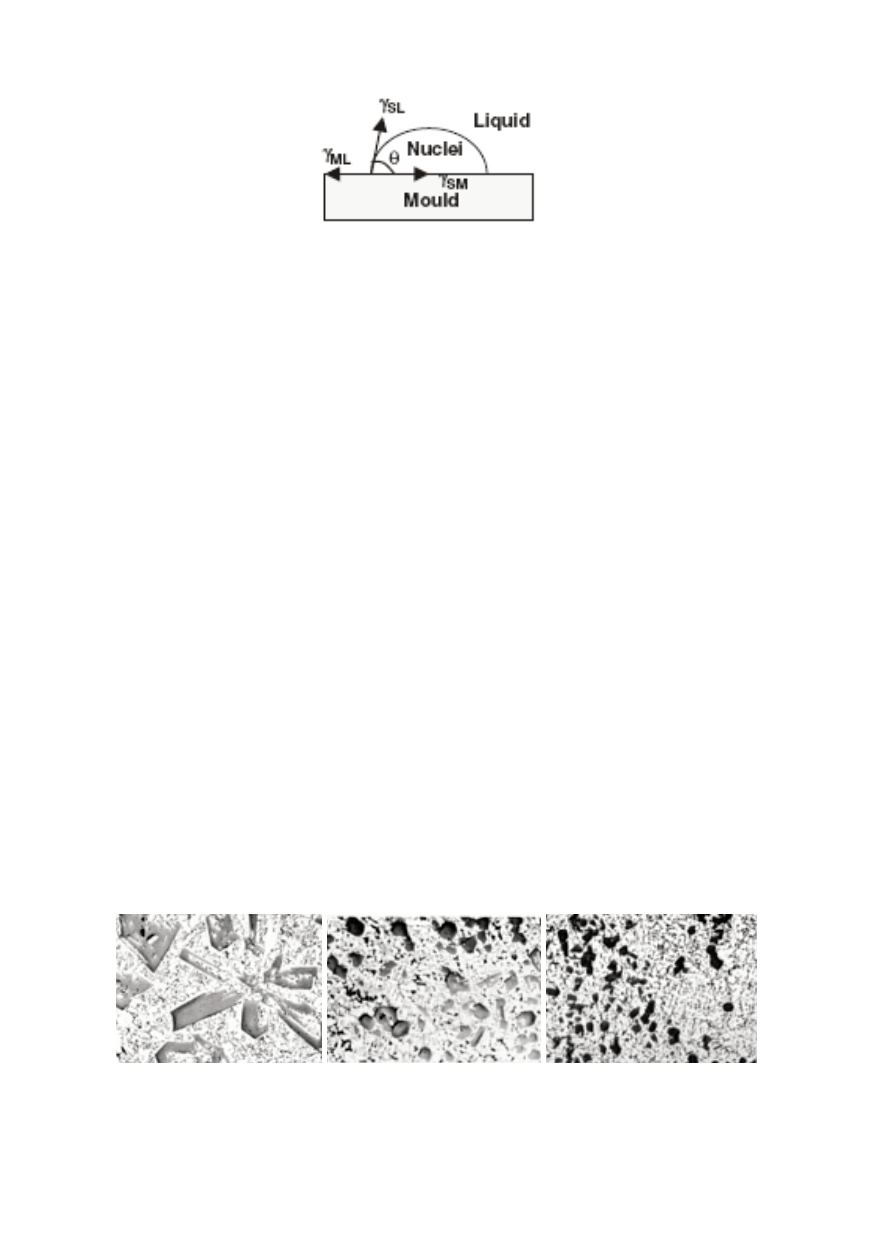

292
Figure 9: Heterogeneous nucleation during solidification on a mould wall. The designation on the
figure is related to Eq. (3) /18/
The equal energetic balance is considered if instead of solidification, a precipitation
occurs on present particle and grain boundary.
It is well known that at liquidus temperature, first fraction of metallic materials starts
solidification. The nuclei are, in accordance to Eq. (3), formed on the wall of the mould,
leading to formation of dendrites. Dendrites are characterized by its characteristic shape.
They lead to chemical and structural inhomogenities. This type of microstructure has very
low plasticity, relatively high hardness and strength, but very poor toughness. In order to
increase the toughness of as cast microstructures, the main challenge was to decrease the
size of dendrites. The main route was to introduce extremely large number of places on
which the nuclei of the dendrites can occur. The best possibility was to make some modi-
fications of the chemical composition of liquid metal, in order to obtain large number of
particles. These particles are high temperature oxides or sulphides and they are formed
within the liquid phase. From the start of cooling, each of them acts as example shown in
Fig. 10, i.e. as a place for heterogeneous nucleation. In some cases, the classic dendritic
solidification is not occurring, but formation of equiaxial grains. Therefore, within the
equal volume, larger number of places for start of nucleation will lead to smaller
dendrites. Smaller dendrites will improve mechanical properties, i.e. yield stress will be
increased, together with toughness. Figure 10 shows the effect of modification of
solidification microstructure due to phosphorus refinement on the microstructure of Al-
22Si-1Ni-1Cu alloy. Figure 10.a show extremely large primary crystals, within the
eutectic mixture. These large crystals actually serve as stress concentrators, resulting in
very low toughness. Addition of phosphorus will modify the places for primary crystals
solidification, Fig.10.b, i.e. their number is dramatically increased. Therefore, no large
primary crystals can be observed and microstructure with higher toughness is obtained.
Figure 10.c show the microstructure obtained after addition of phosphorus (molten in
liquid phase) and use of flux. The particles of flux have the same role in refining the
microstructure. Also, the best effect is achieved using combined treatment with both
phosphorous and flux /9/.
(a) (b) (c)
Figure 10: Effect of phosphorus refinement on the microstructure of Al-22Si-1Ni-1Cu alloy. (a)
Unrefined. (b) Phosphorus-refined. (c) Refined and fluxed. All 100X /9/


















